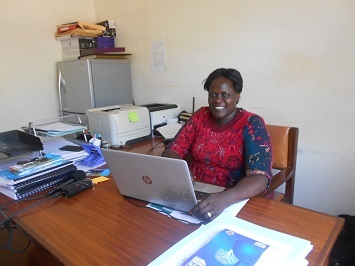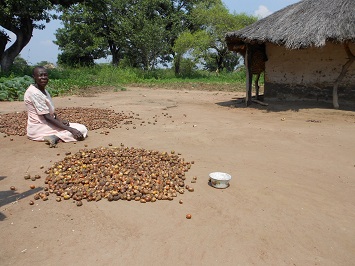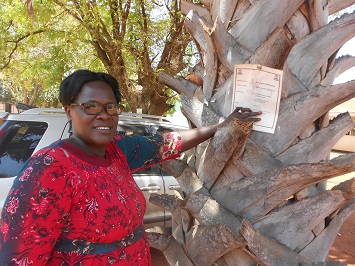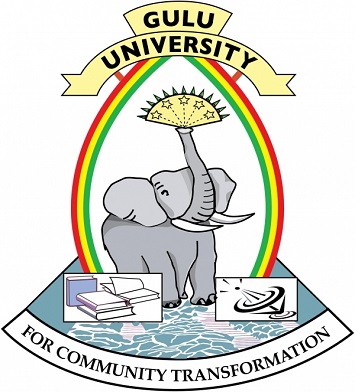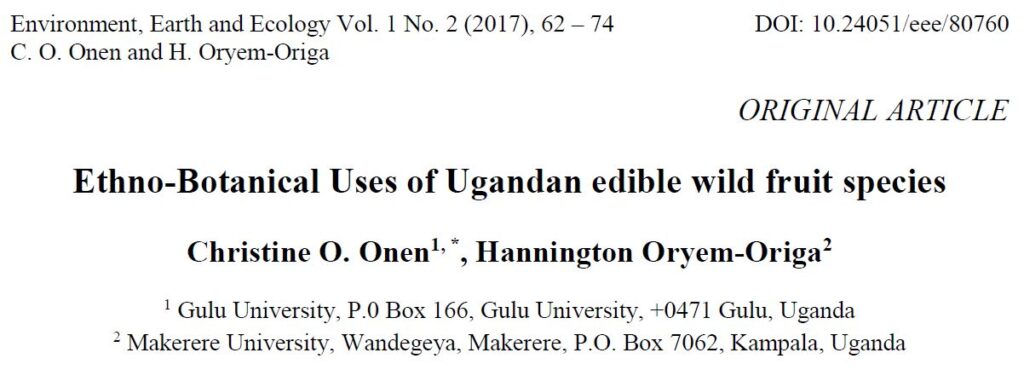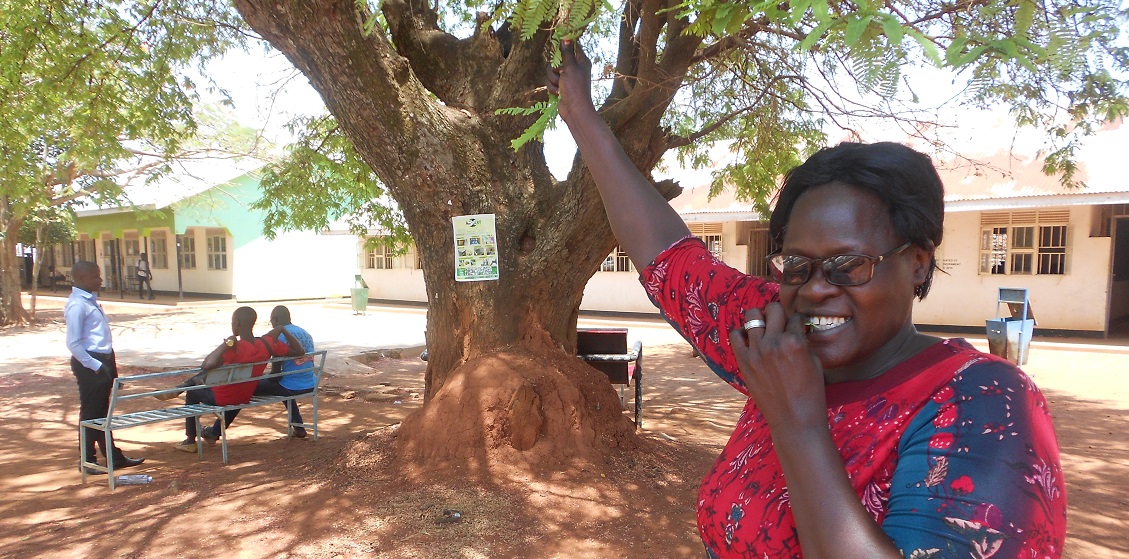In 2010 Christine Oryema set out to do her PhD. She was, through the process, to find and document the diversity, uses and nutrient composition of indigenous edible fruit trees of northern Uganda, particularly in Gulu and Amuru districts. Although she later narrowed her study site to just six sub counties of Gulu, she found more disturbing questions beneath the answers she sought, leading her to conclude: “I think I have just brought out this area. It has not been studied.”
The PhD, conferred upon her in 2014, enabled her get promoted from Lecturer to Senior Lecturer, then to Acting Deputy Director of the Institute of Research and Graduate Studies (IRGS), and later to Acting Director of the institute, the position she has occupied since May 2018. As we sit in her cool office at Gulu University this hot February afternoon Oryema tell me she is leaving this job soon. “I need to resume my research,” she says.
The thesis of her PhD is titled: Ethno-Botanical Importance and Nutritional Compositions of Edible Wild Fruit Species in Gulu District. You have to hear Oryema speak or see her facial expression and gesticulations to understand how passionate she is about her research area.
“You can come this side,” she invites me to stand beside her and face her laptop screen: “These are some of the most mentioned and most preferred by the community,” she tells me as she points at pictures of fruits from the Shea tree (Vitellaria paradoxa), the African fan palm tree (Borassus Aethiopum) and Tamarind (Tamarindus indica).
“I documented 60 tree species from the areas where I conducted the study. There are some striking fruit trees like the Shea tree, the African fan palm tree, so many interests are on them – timber, charcoal – I thought I would study them in detail because if I brought out their uses people would be able to appreciate and think much more of conserving them, rather than destroying them,” Oryema tells me.
Basis of the research
Oryema’s study came after an armed conflict in northern Uganda that stretched over two decades from the early 1980s. Hundreds of thousands of people were displaced and forced to live live in Internally Displaced Persons (IDP) camps as government forces battled with those of the Lord’s Resistance Army (LRA).
Oryema had been born in this area and remembered so well how, when they were young, they used to enjoy fruits of indigenous trees whose careless destruction she was now witnessing. When the chance came to her for a PhD sponsorship, funded by the Danish International Development Agency (DANIDA) through the Enhancement of Research Capacity (ENRECA) programme, she took it with excitement. She jointly would be supervised by professors in Uganda and Denmark through collaboration between Gulu University and the University of Copenhagen.
“What ignited my feeling to do this research was the rate of destruction of indigenous fruit trees especially around the camps. There were places called Juka, which means no-go zone. All your activities had to be enclosed in the camp. But people would sneak into these places, cut whichever trees they could find, and sell the firewood or charcoal in nearby towns. This kind of behaviour built in their mind and spirit that when you cut trees you get money, irrespective of whichever tree they would just cut,” Oryema tells me.
“Secondly I wanted to find out whether there was still knowledge of the various trees and their importance. I had experienced this life. Before the war we would sit at a campfire with elders who would tell us stories and also answer our questions. We ask ‘what type of food is this’ and they tell us. ‘Did the elders have the opportunity to pass on information while in the camp?’ We realised that opportunity was not there, the major reason we attach to the rate of destruction of those trees,” Oryema adds.
A typical IDP camp was, indeed, far from an ideal home to raise a child in. There were hundreds of families from different backgrounds camped in a few square metres and sheltering under temporary structures. Everyone in the camp was almost sure to go to bed hungry if relief food was delayed. Many who grew up in the camps had limited schooling opportunities, were exposed to early childhood sex, and even married when they were young. Survival of family members was dependent almost entirely on relief aid and the surrounding natural resources.
Another thing Oryema wanted to find out with her research was the nutrient composition of the indigenous fruits. She wanted to make a nutritional case for them. People who were eating them had their own claims such as; a certain fruit adds energy to the body, but this required scientific proof. Oryema wanted to document this.
Findings and more questions
Although she was able to document 60 tree species, her main attention was drawn to five – which were the most mentioned as eaten and accessible by the local people. These included the Shea tree, the African fan palm, Tamarind, the African custard-apple (Annona senegalensis) and the Black plum (Vitex doniana).
She takes me through some of her findings: “From the African palm we get the fruit which is yellow. It is eaten. The seeds are gathered together and covered. When the first root (hypocotyl) grows they dig it out, boil and eat it. Even the endosperm, they crack the seed and feed their children on it. I got a diversity of what is got from a particular tree which may not be known by other people,” Oryema tells me.
It is, however, with the Shea nut fruit, that Oryema found the most bothering questions. When the fruit ripens it falls. People collect the fruits and cover them in pits where the pulp rotes. Their target is the seeds, to produce shea butter, popular in many local cuisines.
“Why should the pulp be destroyed in order to get the seed for oil?” Questions started to linger in Oryema’s mind. “But if the pulp was useless why is the child eating it?”
Oreyema found that some people had started to make cake from the shea nut pulp, on a very small scale though. The main target still remained the shea butter. “Do we get a lot more oil from the fermented seed other than the direct extraction? Is there any way we can improve the production of this cake, and commercialise it?” Oryema continues to wonder.
“What puzzles me is why are people interested in fermented seeds to use for oil than getting the technology to remove the pulp first and then use the seeds? I keep thinking about how we can check the quantity and quality of the oil, which should benefit this woman, and even the pulp,” Oryema tells me.
Are wild fruits that important?
Oryema’s study started four years after government had declared the armed conflict over. People had been allowed to leave the official camps and return to their homes. But many still feared for their lives. They instead set up satellite camps. Access to garden fruits was difficult. Even now, rural areas in northern Uganda rank among the poorest – directly reliant on natural resources.
“You don’t have the food, no money. You cannot get pineapple, you can’t get oranges, the only fall back for you to get nutrients is the wild fruits,” Oryema says. “I tested them dry and fresh. I found significant amounts of macro minerals. I tested them for Zinc, Iron and all that. And, however minute the minerals may be, they are important in the body,” Oryema tells me. “Even now there are people who don’t have a single tree of exotic fruit or pineapple but these things are free wherever you move in the bush and they have been eaten now and again.”
Oryema feels her study is relevant to three of the global Sustainable Development Goals (SDGs), which Uganda subscribes to and has incorporated into its development programmes: Goal 3: Ensure healthy lives and promote well-being for all at all ages; Goal 5: Achieve gender equality and empower all women and girls, and Goal 15: Protect, restore and promote sustainable use of terrestrial ecosystems, sustainably manage forests, combat desertification, and halt and reverse land degradation and halt biodiversity loss.
Beyond the PhD and publishing some papers Oryema feels she needs to communicate further her findings. Currently she is applying the research in her plant taxonomy classes. She has also presented it at a conference in Spain, at Makerere University, and four times at Gulu University’s annual conference.
“People know me as a woman of plants. For my masters I worked on medicinal plants. They call me the indigenous plants woman,” Oryema says. “When I present people like it. Many students are now working on those indigenous plants because they heard me talk about them. I think it used to be a virgin area. I plan to derive policy briefs as well which I can share widely and may be they can bring more attention to these things. In the long term we expect a change and I feel I should be part of it. I feel my work is already inspiring people.”
The Danish study experience
By now we have talked for more than an hour but Oryema is still happy to go on. I ask her about the difference between her study experience in Uganda and Denmark and she sums it up in four words: “Everything there [in Denmark] was good.”
“When you are at home you can’t concentrate. There are many things you can’t ignore. They are calling you for parties, funerals; you have no access to internet so you can’t access certain things, generally everything here is hard,” she narrates.
“In Denmark I had a peaceful environment where I could work. Internet was even in the room where I slept. Sometimes I felt homesick but generally the reading environment was OK, and there you get committed supervisors. I appreciate ENRECA so much for their support,” Oryema adds.
Does she feel any significant change in the study environment at her home university? Not much. “Institutionally finance is a problem. There is a little change but it cannot warrant a full PhD study if you don’t bring in personal resources.”
Read more about Christine Oryema’s PhD study stay in Denmark: “This is work in progress. I feel I just opened the door”
William Odinga Balikuddembe is a science journalist based in Kampala, Uganda

